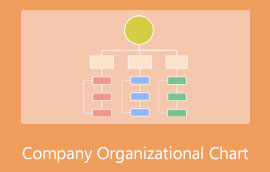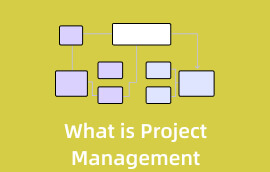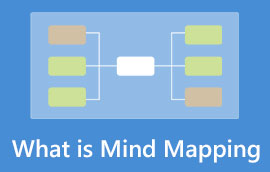Ce este Matrix Organizational Structure? Un ghid cuprinzător al acestuia
Mai degrabă decât un sistem ierarhic tradițional, structura organizațională matrice combină sistemele de conducere verticală și orizontală pentru a forma o structură organizațională. Companiile pot utiliza în general o structură matrice atunci când au nevoie de seturi diferite de abilități pentru a lucra împreună sau când doresc să folosească alte stiluri de management.
Deci, doriți să aflați mai multe despre structura organizatorică matriceală pentru a-l putea folosi eficient atunci când este nevoie? Acest articol va prezenta cele cinci aspecte ale sale: sens, cazuri de utilizare, avantaje, dezavantaje și un exemplu concret. Vă vom oferi, de asemenea, unul dintre cele mai bune instrumente pentru a crea o organigramă matrice și o diagramă simplă creată de noi folosind acest instrument pe care să o verificați.

- Partea 1. Ce este structura organizațională a matricei
- Partea 2. Cazuri de utilizare ale structurii organizaționale matrice
- Partea 3. Avantajele Structurii Organizaționale Matrice
- Partea 4. Dezavantajele Structurii Organizaționale Matrice
- Partea 5. Exemplu de Structură Organizațională Matrice
- Partea 6. Cel mai bun instrument pentru crearea unei diagrame de structură organizațională matrice
- Partea 7. Întrebări frecvente
Partea 1. Ce este Structura Organizațională Matrice

Structura organizațională matrice este o structură de lucru care organizează angajații într-o structură de raportare asemănătoare grilei. Combină un sistem de conducere verticală după funcție cu un sistem de conducere orizontală după proiect sau produs.
În această structură, rolurile de management sunt variate și se pot schimba în funcție de nevoile proiectului, astfel încât angajații pot fi nevoiți să raporteze mai multor lideri. Acest lucru face posibil ca un angajat să mențină legăturile organizaționale și operaționale cu departamentul de funcție original și să participe la echipele de proiect și de produs. Prin urmare, această structură organizatorică este potrivită pentru lucrări de proiect care necesită implicarea unei game largi de profesioniști.
Partea 2. Cazuri de utilizare ale structurii organizaționale matrice
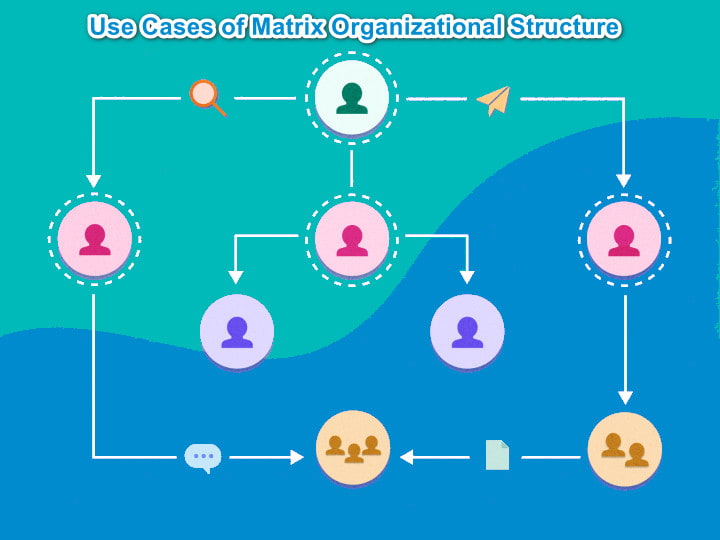
Structura organizatorică a matricei poate fi utilizată în multe situații diferite și iată câteva dintre cazurile de utilizare clasice în care este utilizată:
• Proiect mare și multiplu.
Structura organizatorică matriceală este utilizată atunci când proiecte multiple sau mari sunt gestionate simultan. De exemplu, un spital cu departamente interfuncționale ar putea folosi o structură matrice. Această structură poate coordona mai eficient alocarea resurselor și controlul programului pentru a evita conflictele de resurse și întârzierile de programare.
Verificați detaliile aici pentru a face o diagramă cu funcții încrucișate pentru astfel de spitale sau alte organizații.
• Proiect complex și interdepartamental.
Structura organizatorică a matricei își poate exploata pe deplin avantajele în proiecte complexe care necesită colaborare interdepartamentală. De exemplu, într-o întreprindere de cercetare și dezvoltare sau într-o companie de software, un proiect poate implica mai multe departamente, cum ar fi marketing și vânzări. Structura matriceală permite membrilor echipei să își îndeplinească rolurile și să se asigure că fiecare lucrare se desfășoară fără probleme.
• Operațiuni dispersate geografic.
Într-un mediu de piață extrem de competitiv, structura matriceală, datorită flexibilității și adaptabilității sale, ajută companiile care operează în diferite regiuni și țări să răspundă rapid la schimbările pieței și să se asigure că nevoile fiecărei regiuni sunt îndeplinite.
Partea 3. Avantajele Structurii Organizaționale Matrice
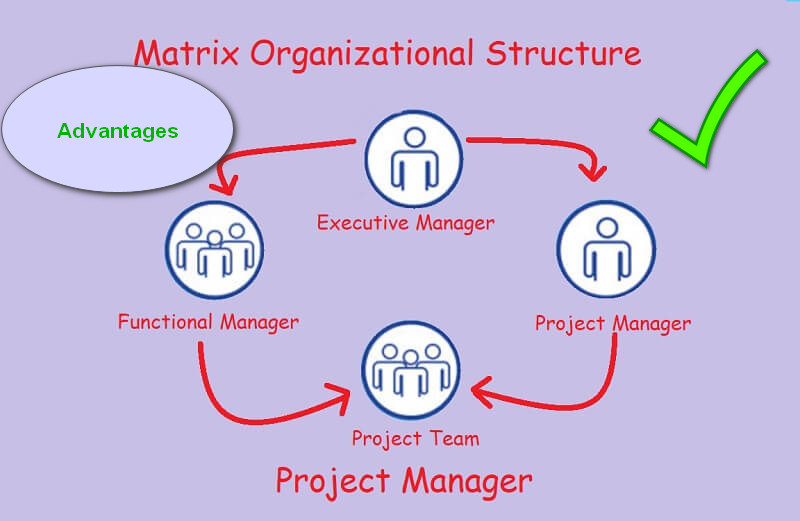
Structura organizatorică matricială face ca angajații să mențină nu numai legătura cu departamentul funcțional inițial, ci și să participe la munca echipei de produs sau de proiect pentru a se asigura că activitățile de afaceri beneficiază de sprijin profesional și formă organizatorică de cooperare între departamente. Deci, această structură are multe avantaje, inclusiv următoarele:
• Îmbunătățiți flexibilitatea și adaptabilitatea.
Structura organizatorică a matricei poate răspunde rapid la mediul extern și la schimbările pieței. În plus, poate forma rapid o echipă inter-departamentală pentru proiecte sau produse specifice pentru a face față cerințelor complexe și schimbătoare ale pieței.
• Promovarea colaborării interdepartamentale.
Această structură încurajează și promovează schimbul de informații, schimbul de cunoștințe și cooperarea între diferite departamente. În plus, sparge barierele departamentale, ajută la rezolvarea problemelor complexe și îmbunătățește eficiența generală a muncii.
• Responsabilitate clară și distribuție a puterii.
Structura organizațională matrice poate distribui eficient responsabilitatea și puterea și poate reduce conflictele și haosul printr-un sistem clar de responsabilitate.
Partea 4. Dezavantajele Structurii Organizaționale Matrice
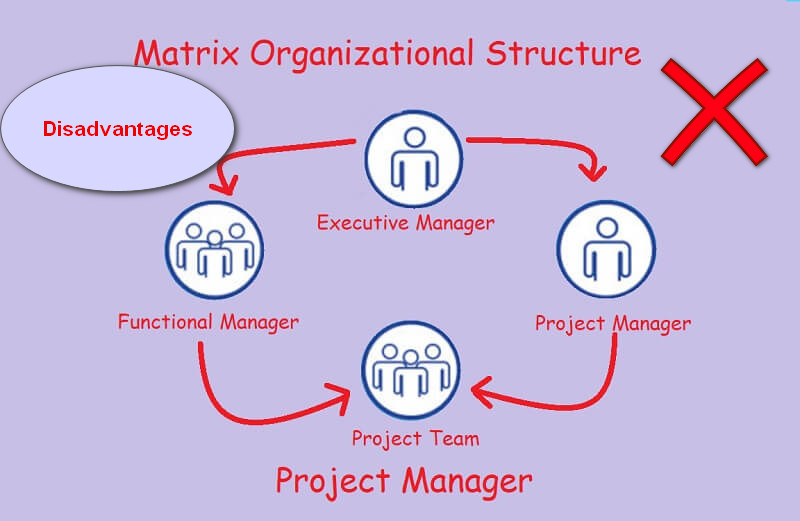
Deși structura organizatorică matriceală are avantaje semnificative, totul are argumente pro și contra. Deci, această secțiune va menționa câteva dintre dezavantajele sale evidente, inclusiv în principal:
• Puteri și responsabilități neclare.
Într-o structură matriceală, angajații pot fi conduși de mai mult de un manager. Acest tip de mecanism de conducere poate duce la conflicte de comandă, responsabilități neclare și conflicte complicate. Angajații se pot simți confuzi atunci când doi lideri nu sunt de acord.
• Costuri mari de comunicare.
Costurile de comunicare în structura organizatorică a matricei sunt de obicei ridicate datorită nivelurilor multiple de raportare și transmiterii de informații cu precizie încrucișată. Deci, mai mult timp și energie trebuie să fie dedicate comunicării și coordonării, ceea ce poate reduce eficiența muncii.
• Dificultatea de alocare a resurselor.
Deoarece mai multe proiecte pot avea nevoie de resurse diferite în structura matricei în același timp, devine o problemă complexă alocarea acestor resurse în mod corect și rezonabil. Dacă nu este manipulat corespunzător, acest lucru poate duce la risipa de resurse sau întârzieri ale proiectelor.
Partea 5. Exemplu de Structură Organizațională Matrice
În această secțiune, vom oferi un exemplu concret și vom atașa organigrama noastră matriceală auto-creată pentru a vă ajuta să înțelegeți mai bine structura organizatorică matriceală.
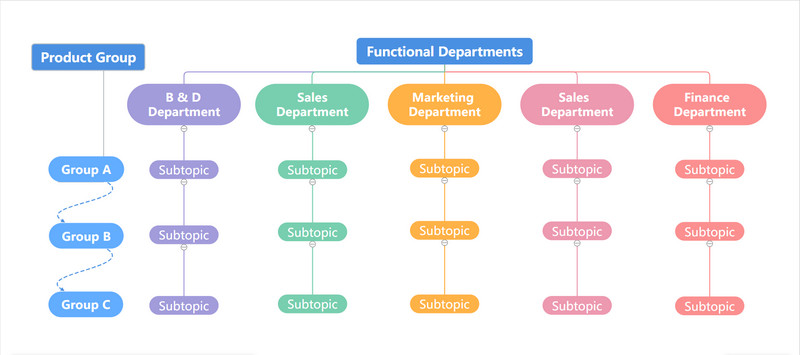
Iată un exemplu de prezentare generală a structurii organizatorice a matricei.
Să presupunem că o companie de tehnologie dezvoltă diverse produse electronice, inclusiv smartphone-uri, tablete și ceasuri inteligente. Pentru a gestiona mai eficient dezvoltarea, producția și vânzările acestor produse, compania a decis să adopte o structură organizatorică matricială.
• Departamente funcționale:
Compania are departamente funcționale precum R&D (Cercetare și Dezvoltare), marketing, vânzări, producție și finanțe. Aceste departamente sunt responsabile pentru activitatea profesională în domeniile lor respective și mențin o structură organizatorică fixă.
• Grup de produse:
Compania a creat grupuri speciale de produse pentru diferite produse. Fiecare echipă de produs este formată din membri din diferite departamente funcționale pentru a se asigura că profesioniștii participă la toate legăturile de la cercetare și dezvoltare până la vânzări.
• Conducere dublă:
Membrii echipei de produs acceptă simultan conducerea managerilor de departamente funcționale și a liderilor echipei de produse. Acest mecanism dublu de conducere poate consolida cooperarea între departamente și poate asigura progresul lin al dezvoltării produsului.
Pe scurt, structura organizatorică a matricei poate realiza alocarea eficientă a resurselor și cooperarea strânsă între departamente prin combinarea departamentelor funcționale și a grupurilor de produse. Această structură organizatorică este aplicabilă în domenii precum cercetarea și dezvoltarea științifică și tehnologică, managementul proiectelor etc.
Partea 6. Cel mai bun instrument pentru crearea unei diagrame de structură organizațională matrice
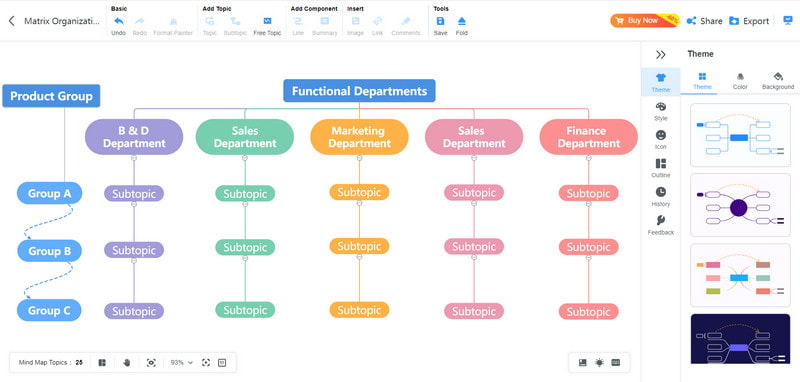
MindOnMap este un instrument profesional de cartografiere mentală compatibil cu mai multe platforme. Poate fi descărcat gratuit pentru Windows sau Mac, sau îl puteți folosi online. În plus, are multe scenarii de utilizare, cum ar fi luarea de note și realizarea de schițe pentru articole sau discursuri, precum și structura organizatorică matriceală pentru managementul proiectelor. Cu atât de multe scenarii, este într-adevăr un partener bun în studiul și munca noastră.
Descărcare sigură
Descărcare sigură
În plus, are multe avantaje, cum ar fi o varietate de șabloane de hărți mentale, pictograme unice folosite pentru personalizarea hărții mentale, imagini sau link-uri care pot fi inserate în harta mentală pentru a ajuta la clarificarea ideilor și așa mai departe. Dacă trebuie să creați o organigramă matriceală sau alte diagrame, MindOnMap este cea mai bună alegere!
Partea 7. Întrebări frecvente
1. Ce companii folosesc o organizație matricială?
Multe companii, precum Philips, Spotify, Starbucks, Nike etc., au folosit structura organizatorică a matricei.
2. De ce folosește Starbucks o structură matriceală?
Starbucks este o organizație globală care operează în mai multe regiuni geografice și categorii de produse. Structura matriceală îl avantajează foarte mult, ceea ce permite companiei să exercite un control mai fin asupra operațiunilor sale internaționale.
3. Coca-Cola are o structură matriceală?
Da, Coca-Cola folosește o structură matriceală complexă, care permite companiei să răspundă eficient la complexitatea mediului de afaceri divers și ajută la menținerea coerenței operaționale în întreaga organizație.
Concluzie
Acest articol prezintă în principal structura organizatorică matriceală din cinci aspecte și recomandă MindOnMap, cel mai bun instrument pentru crearea matricei organigrame. Structura organizatorică matricială este utilizată pe scară largă în multe tipuri de afaceri și organizații datorită flexibilității și adaptabilității sale. Iar MindOnMap, ca instrument de cartografiere mentală cu o interfață intuitivă și ușor de utilizat, vă poate face procesul de organizare matriceală mai ușor. Descărcați-l gratuit sau încercați-l online. Depinde de tine! Dacă întâmpinați probleme sau aveți experiență în procesul de cartografiere, nu ezitați să le împărtășiți în secțiunea de comentarii!









